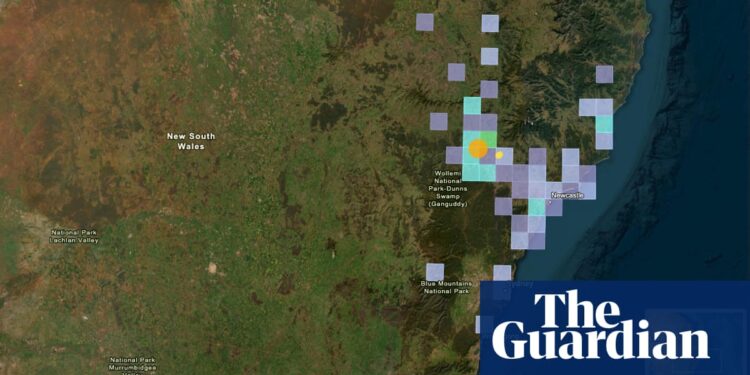A 4.1-magnitude earthquake that rocked the New South Wales town of Muswellbrook is likely part of an “earthquake swarm” that could see “hundreds to thousands” of small to moderate shocks over the coming months, according to a government seismologist.
The earthquake, which hit around midday on Tuesday and was shallow at 3km deep, is the fourth event over magnitude four in three months in the Hunter region. On 23 August, a 4.7-magnitude earthquake hit Muswellbrook, damaging homes and businesses.
“What we are observing in general is earthquake swarm activity – a series of moderate-sized events, happening close to each other, both in time and space … and they may continue for months to come,” said Hadi Ghasemi, senior seismologist at Geoscience Australia.
“In this case, we have had four magnitude-four and above events in the sequence so far,” he said.
“Each swarm sequence may include hundreds to thousands of small to moderate side events.”
Ghasemi said a “moderate” shock, which he said was not a technical term, but to him meant an earthquake of magnitude five or below, could see property damage such as cracks in the walls, and items falling off shelves, and that people close to the epicentre, would experience “a strong level of ground shaking”.
About 2,500 homes and businesses in Muswellbrook were left without power following Tuesday’s earthquake.
According to Geoscience Australia’s earthquake map, the epicentre of the earthquake appeared to be at the Mt Arthur coalmine – just outside Muswellbrook.
A BHP spokesperson said: “No one was injured following an earthquake on Tuesday 12 November. Operations have temporarily paused as we conduct a site wide inspection.”
after newsletter promotion
Ghasemi said that he could not say with certainty whether today’s earthquake had been caused by mining activity in the area, or if it was related to the fact that mine sites are often constructed on fault lines, due to the way mineral deposits form.
“Mines are often constructed on ancient faults because the faults are the reason that the mineral deposits form in the first place.
“We know there are cases where the seismicity is actually linked to the mining activity … because of removing, for example, large volume of the rock mass because of the mine … and then that’s when we call them induced earthquakes.”
Ghasemi said there some “clues” as to whether a quake was the result of induced activity – they are often located close to a mine site, and are generally very shallow events, because mining activity happens close to the surface.
But he said it was “too early” to have a high certainty about whether Tuesday’s earthquake was induced.
Peter Dutton has announced that if he wins next year’s election, his government plans to build a nuclear reactor in Liddell, in the upper Hunter, less than 20km from Muswellbrook.






